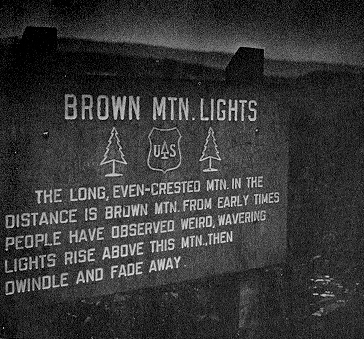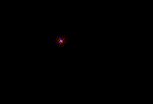
The Brown Mountain Lights are one of the most famous of North Carolina legends. They have been reported a dozen times in newspaper stories. They have been investigated at least twice by the U.S. Geological Survey. And they have attracted the attention of numerous scientists and historians since the German engineer, Gerard Will de Brahm, recorded the mysterious lights in the North Carolina mountains in 1771.
"The mountains emit nitrous vapors which are borne by the wind and when laden winds meet each other the niter inflames, sulphurates and deteriorates," said de Brahm. De Brahm was a scientific man and, of course, had a scientific explanation. But the early frontiersman believed that the lights were the spirits of Cherokee and Catawba warriors slain in an ancient battle on the mountainside.
One thing is certain, the lights do exist. They have been seen from earliest times. They appear at irregular intervals over the top of Brown Mountain - a long, low mountain in the foothills of the Blue Ridge. They move erratically up and down, visible at a distance, but vanishing as one climbs the mountain. From the Wiseman's View on Linville Mountain the lights can be seen well. They at first appear to be about twice the size of a star as they come over Brown Mountain. Sometimes they have a reddish or blue cast. On dark nights they pop up so thick and fast it's impossible to count them.
Among the scientific investigations which have undertaken from time to time to explain the lights have been two conducted by the U.S. Geological Survey. The first was made in 1913 when the conclusion was reached that the lights were locomotive headlights from the Catawba Valley south of Brown Mountain. However, three years later in 1916 a great flood that swept through the Catawba Valley knocked out the railroad bridges. It was weeks before the right-of-way could be repaired and the locomotives could once again enter the valley. Roads were also washed out and power lines were down.
But the lights continued to appear as usual. It became apparent that the lights could not be reflections from locomotive or automobile headlights.

